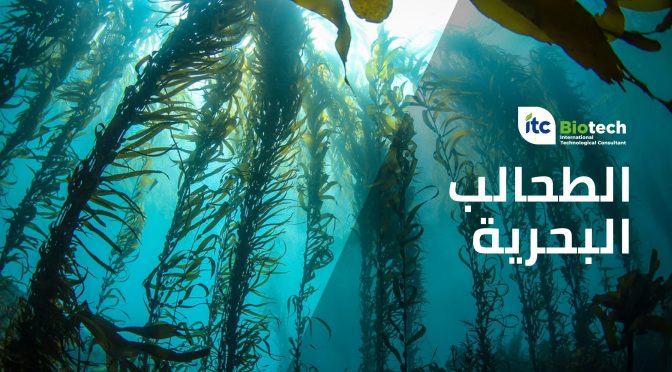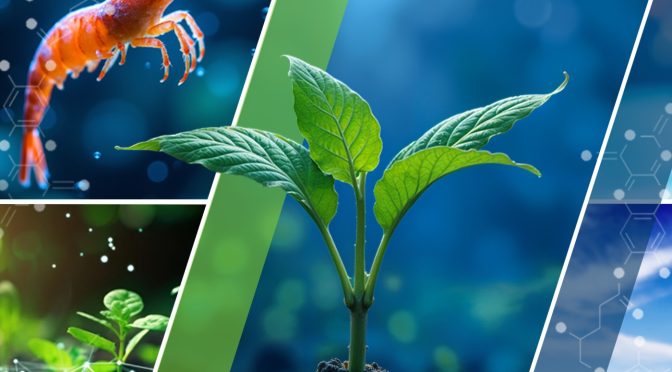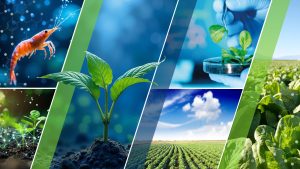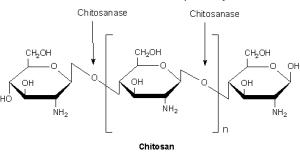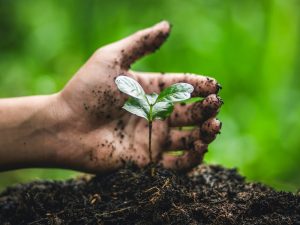هذا المقال هو دليلك الشامل لكل ما تحتاج لمعرفته عن الطحالب البحرية، من أنواعها إلى فوائدها واستخداماتها في الزراعة. استكشف معنا كيف يمكن لهذه الموارد الطبيعية أن تُحدث فرقًا كبيرًا في الإنتاج الزراعي وتحقيق الاستدامة البيئية
جدول المحتويات
- الطحالب والأعشاب البحرية وأهميتها عالميا
- فوائد الطحالب البحرية للنبات
- أنواع الطحالب البحرية
- أنواع الطحالب المستخدمة في الزراعة
- المركبات الكيميائية المميزة للطحالب البنية
- فوائد سماد الطحالب البحرية
- استخدام سماد الطحالب
الطحالب والأعشاب البحرية وأهميتها عالميا
تساهم الطحالب، بما في ذلك الأعشاب البحرية والطحالب الدقيقة، بحوالي 30% من إنتاج الأحياء المائية عالميًا، مما يوفر فوائد اجتماعية واقتصادية للمجتمعات الساحلية. كما تلعب الأعشاب البحرية دورًا مهما في تعزيز الصحة البشرية والبيئية . وقد لفتت مساهمات الأعشاب البحرية والطحالب الدقيقة المتنوعة في مجال الصحة البشرية والفوائد البيئية والخدمات البيئية التي تقدمها الأعشاب البحرية والطحالب الدقيقة الانتباه بشكل متزايد إلى الإمكانات غير المستغلة لزراعة الأعشاب البحرية والطحالب الدقيقة.
فوائد الطحالب البحرية للنبات
منذ خمسينيات القرن الماضي، تم استخدام مستخلصات الطحالب كمحفزات حيوية. تعمل هذه المستخلصات على تحسين نمو النباتات، وزيادة إنتاجية المحاصيل، وتحسين جودة المنتجات، بالإضافة إلى تعزيز تحمل النباتات للإجهاد غير الحيوي والأمراض.
منذ خمسينيات القرن الماضي، تم استخدام مستخلصات الطحالب كمحفزات حيوية لنبات . بسبب انها تحفز الاستجابات الفسيولوجية في النباتات، مثل
- تعزيز نمو النبات.
- إطالة العمر الافتراضي للمنتج.
- تزيد تحمل النباتات لمجموعة واسعة من الإجهاد غير الحيوي (الملوحة والجفاف، والصقيع).
- تقلل من شدة الإصابات من الأمراض الفطرية والفيروسية وبعض الحشرات.
- تحسين الإزهار والمحصول.
- تحفيز جودة ومحتوى المنتج الصالح للأكل.
أنواع الطحالب البحرية
تنقسم الطحالب البحرية، المعروفة بالأعشاب البحرية، إلى ثلاث مجموعات رئيسية حسب اللون:
الطحالب البنية
(شعبة Ochrophyta، طائفة Phaeophyceae)
الطحالب الحمراء
(شعبة Rhodophyta)
الطحالب الخضراء
(شعبة Chlorophyta، طوائف Bryopsidophyceae وChlorophyceae وDasycladophyceae وPrasinophyceae وUlvophyceae).
تختلف الأعشاب البحرية بشكل كبير في العديد من التركيب والصفات الكيميائية الحيوية من حيث محتواها من الصبغات الضوئية ومركبات التخزين وتكوين جدران الخلايا ووجود/غياب الأسواط والانقسام الخلوي وطرق الاتصالات بين الخلايا المجاورة والتركيب الدقيق للبلاستيدات الخضراء
أنواع الطحالب المستخدمة في الزراعة
تشمل الطحالب الخضراء من جنس Azola و Spirulina والطحالب البنية من جنس Aschphyllum و Ecklonia ، و Ectocarpus ، و Fucus الأكثر شيوعًا المستخدمة في الزراعة في جميع أنحاء العالم، ويوجد حوالي 1800 نوع من الطحالب البنية، معظمها بحرية، وكل منها مختلف • وتعتبر الطحالب البنية أكبر حجمًا وتوجد معظم الأنواع في المياه الباردة •
وتختلف الطحالب البنية فى محتواها من حيث كميات المكونات الكيميائية المختلفة التي تلعب دورًا مهمًا في فسيولوجيا النبات وفي تكاثر المجتمعات الميكروبية في التربة ، وكذلك على المركبات المضادة للميكروبات و تعتبر الطحالب البنية اكثرهم شيوعا في المجال الزراعي.
المركبات الكيميائية المميزة للطحالب البنية
تحتوي الطحالب البنية، مثل أسكوفيلوم، على المركبات الرئيسية الاتية:
- العناصر الكبرى (الفوسفور، البوتاسيوم، الكالسيوم، الماغنسيوم، الكبريت).
- العناصر الصغرى (البورون، الحديد، المنجنيز ، الزنك).
- الأحماض الأمينية الحرة (مثل الجليسين- الانين- فالين-ميثونين-ايزوليوسين-ثريونين-سيستين-فنيل الانين-سيرين-سريونين-لايسين-جلوتاميك-اسبارتك-ارجنين-هيدروكسى برولين ) (التى تعمل علي النمو المتوازن والجيد للنبات وتزيد من استجابة النبات للتسميد وزيادة المقدرة على تحمل بعض الأمراض وكذلك لتحمله لظروف الاجهاد المختلفة – زيادة المجموع الجذري للنباتات وتقويته – زيادة تركيز الكلوروفيل واستقبال الطاقة الضوئية وسكريات البناء الحيوي.- توفير جزء من الاحتياجات النيتروجينية لنباتات وكذلك منع التسمم الداخلي بالأمونيا للنباتات – تحسن نمو المحاصيل البستانيه (خضر – فاكهة – محاصيل – نباتات الزينة) وتزيد من قوة نموها
- العديد من السكريات البسيطة والسكريات الكحولية (التى تعتبر توفير الطاقة اللازمة لتصنيع البروتين داخل النبات و محفزات آليات الدفاع النباتية)
- الهرمونات النباتية (السايتوكاينين، والاكسينات) (التى تعمل على تأخير دخول النبات الى الشيخوخة ،و منع تساقط الاوراق والإزهار والثمار،ومنع الاصفرار لتأثيره الموجب على البروتين والاحتفاظ بمادة الكلوروفيل ومنع تحللها،وتشجيعه لانقسام الخلايا وتشجيع نمو الجذور ،وزيادة قدرة تخزين بعض المحاصيل الورقية كما فى الخس والبقدونس نتيجة الى انه ينقص من معدل تنفس فى هذه المحاصيل).
- حمض الألجينيك والذى يتم تحريره من جدار خلية الطحالب إلى أشكال ملح قابلة للذوبان في الماء أثناء عملية الاستخلاص. (هذه الأحماض والسكريات القليلة التعدد هي مخالب معدنية قوية تعمل على تخليب ” “Fe , Zn , Mn , Mg , Ca والتى تساعد في توافر/توصيل هذه العناصر الغذائية.).
- الامينارين الذى ثبت دوره ايضا في أغراض تحفيز المناعة لدى النباتات.
- السكريات المتعددة المحتوية على الفوكوز (FCP) والتى تتمتع بالعديد من التأثيرات مثل القدرة المضادة للفيروسات ومضادات الأكسدة
- بعض أنواع الفيتامينات : مثل (ثيامين (فيتامينB1 )– ريبو فلافين B2 – فيتامين B12 – فيتامين )( C والتى تعمل على الاتى :-1- تنشيط النمو وتنظيمه داخل النبات 2- ينشط عملية التمثيل الضوئي ويشارك في نقل الالكترونات أي عمليات الأكسدة والاختزال داخل النبات 3- وينشط تكوين الاكسينات الطبيعية داخل النباتات ولهذا فهو ينشط التجذير كما يلعب دوراً أساسياً في زيادة الانقسامات المرستيمية.-4. ينشط عملية التمثيل الضوئي (الكلوروفيللي) وتكوين السكريات داخل النبات
متوسط محتوى طحلب الاسكوفيليم من المركبات الكيماوية المختلفة (عن Pereira واخرون 2020)
الماء (12–15%,)، السليلوز (8%)، الرماد (17–20%)، البروتين (5–10%,)، حمض الألجنيك (20–29%,)، الفوكويدان (عبارة عن سكر كبريتى عديد متفرع) (19%)، سكر مانيتول (5–8%)، لامينارين (هو جلوكان تخزين ( بولي سكاريد الجلوكوز) (2–36%)، كاروتين (30–60 mg kg−1)،
العناصر الكبرى: فوسفور (0.1–1.15%)، بوتاسيوم (2–3%)، كالسيوم (1–3%)، مغنسيوم (0.5–0.9%)، كبريت (2.5–3.5%)
العناصر الصغرى: حديد (150–1000 mg kg−1)، منجنيز (10–50 mg kg−1)، زنك (50–200 mg kg−1) ، بورون (40–100 mg kg−1)، مولبدينم ( 0.3–1 mg kg−1)، صوديوم (3–4%)
العناصر النادرة : كوبلت (1–10 mg kg−1)، يود (700–1200 mg kg−1)، نيكل (2–5 mg kg−1,)ن الباريوم (15–50 mg kg-1, )
الفيتامينات: فيتامين ج (500–200 mg kg−1)، فيتامين أ (30–60 mg kg−1,)، فيتامين ك (10 mg kg−1)، توكوفيرول (فيتامين هـ) (150–300%)، حمض الفولينيك (0.1–0.5 mg kg−1)،
فيتامين B المركب = (B1 = 15 mg kg−1، B2= 5–10%، B3 =10–30% ، B6 = < 1 mg kg−1، B7 = 0.1–0.4 mg kg−1، B12 = 0.004%,، حمض الفوليك (B9) = 0.1–0.5 mg kg−1 )
طريقة استخدام سماد الطحالب البحرية
يرش مباشرة على أوراق النبات أو يضاف إلى التربة حول جذور النبات. و يمكن استخدامه أيضا لنقع البذور قبل الزراعة لتحسين الإنبات. كما يوصى بتطبيقه بانتظام خلال مراحل نمو النبات لتعزيز النمو وزيادة مقاومة الإجهاد البيئي
اعلى نسبة مسجلة من طحلب ال Aschphyllum عالميا لمنتج فورالج من تصنيع شركة اسفرتجلوبال البرتغالية
المصادر:
Cai, J., Lovatelli, A., Aguilar-Manjarrez, J., Cornish, L., Dabbadie, L., Desrochers, A., Diffey, S., Garrido Gamarro, E., Geehan, J., Hurtado, A., Lucente, D., Mair, G., Miao, W., Potin, P., Przybyla, C., Reantaso, M., Roubach, R., Tauati, M. & Yuan, X. 2021. Seaweeds and microalgae: an overview for unlocking their potential in global aquaculture development. FAO Fisheries and Aquaculture Circular No. 1229. Rome, FAO. https://doi.org/10.4060/cb5670en
Indira López-Padrón, Lisbel Martínez-González, Geydi Pérez-Domínguez, Yanelis Reyes-Guerrero, Miriam Núñez-Vázquez y Juan A. Cabrera-Rodríguez. (2020). Algae and their uses in agriculture. An update. Cultivos Tropicales, , vol. 41, no. 2, e10
MASON, T E (2019). Extract of Ascophyllum nodosum commercial application in South African agriculture. https://www.fertasa.co.za/wp-content/uploads/2019/01/05-Mason-Extract-of-Ascophyllum.pdf
Pereira, L ; Morrison, L.; Shukla, P.S. and Critchley, A.T. (2020) . A concise review of the brown macroalga Ascophyllum nodosum (Linnaeus) Le Jolis, J Appl Phycol 32:3561–3584
